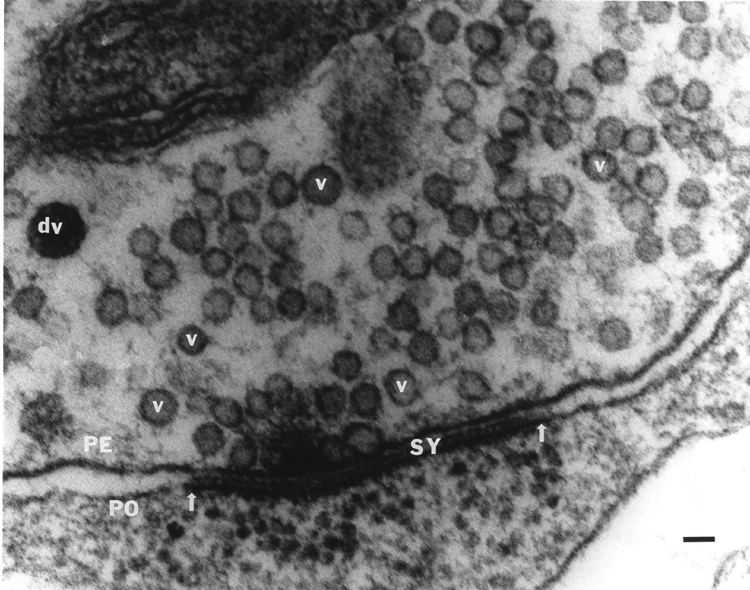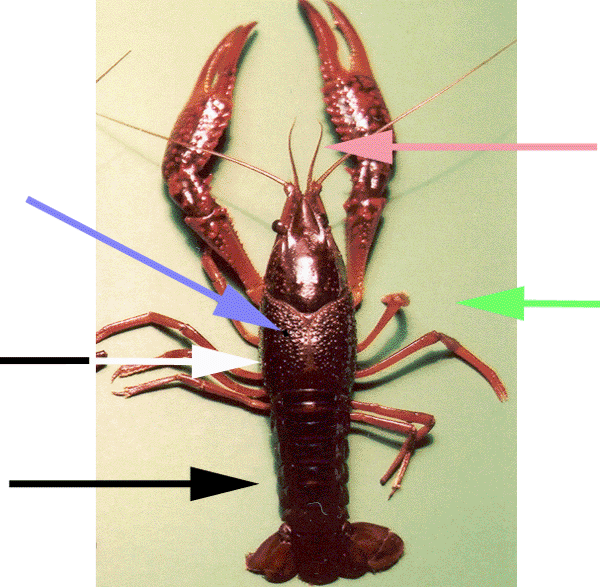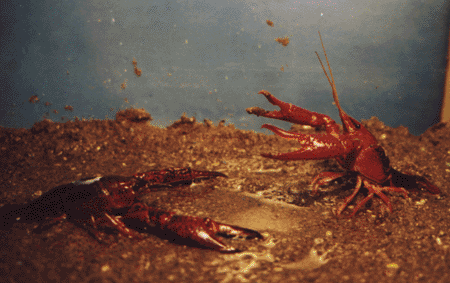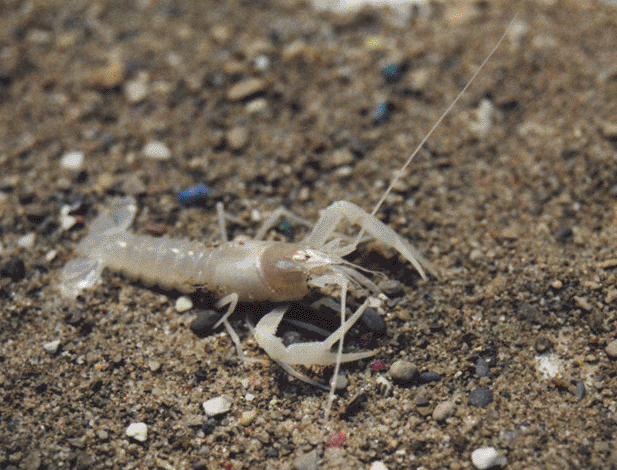



Olfaction
Intrinsic State
Whole Animal Perception
Muscle Receptor Organ (Proprioception)
| CRAYFISH Projects | |||||
| Back to General Research | |||||
| Back to Home Page | For the lastest movie clips of research projects (go to) | ||||
|
(click
on topic to jump to section on this page)
|
|||||
|
|
|
|
|||||
 |
|||||||
|
Olfaction |
|||||||
| Integration of Sensory | |||||||
|
Intrinsic State Whole Animal Perception
|
|||||||
| Hairs | |||||||
|
Muscle Receptor Organ (Proprioception) |
|||||||
|
|
|
|||||
| Whole Animal Projets | |||||
| General Behavior ..... Physiological Responses...... Regulation of Behavior | |||||
|
1. General Behavior: There are various subprojects that are being tactled in this theme of behavior. Here we just mention projects strictly focused on observational behavior.
ABSTRACT -This study examines behaviour of cave-adapted blind crayfish to novel territories of various sizes. Cave crayfish, Orconectes australis packardi , were kept in a dark room within individual aquaria for 7 days. Crayfish are then placed into a small tank (33 X 28 X 23 cm, 10-15 cm water depth), and a large tank (54 x 37 x 30 cm, 10-15 cm water depth). Time, distance of movements, and length of pauses are recorded. Upon initial placement in a new setting, crayfish will walk around the perimeter where their antenna can contact the side of the tank. The animals will subsequently move around the tank away from the perimeter, or they will begin to dig a burrow. Familiarity within the environment for an individual crayfish is defined as when the animal initiates digging or remains in one place for over 5 minutes. So far this study demonstrates that the time required to become familiar to a new setting depends on the size of the setting. This suggests that a balance between sensory input and inner processing, termed 'familiarity' can be reached.
ABSTRACT- The purpose of this study is to investigate the repertoire of social behaviors that cave adapted blind crayfish have as compared to those previously reported with interacting sighted crayfish. Since cave crayfish display phototactic behavior, presumably mediated by the caudal photoreceptors in the 6th abdominal ganglion, we test if light, an environmental disturbance for the cave crayfish, alters the normal social behaviors. Observations made in order to quantify social interactions are carried out under infrared or dim, white light. The results reveal that following the paring of same sized individuals, previously housed in isolated conditions for 2 weeks, both tended to tail flip or rapidly escape from each other upon initial antennae contact. This behavior replicates the observations made within the natural cave environment. The rapid tail flip behavior becomes less frequent over time following repetitive interactions. Under white light, many behavioral acts shifted from socially contacting to no contact or retreating. The blind crayfish did not exhibit behaviors usually associated with visual displays and posturing (i.e., the raised meral spread was absent). Ethograms are being constructed of the behavioral repertoires used in the social interactions between aggressive and submissive partners.
ABSTRACT- We examine the probability of the crayfish, P. clarkii, to tail flip in response to a touch on the dorsal tail fan related to the size and the behavioral state of the animal. Alterations in the animal's internal physical state, such as when the animal autotomizes its chelipeds, will cause the larger sized animals to tail flip, when previously they would not. Altering the external environment by removal of water, causes small crayfish, which normally habituate slowly, to rapidly habituate. Observation of large adult crayfish in a species that is adapted to live in total cave darkness, O. australis packardi, revealed that they are more likely to tail flip than are the sighted large P. clarkii. Results indicate that the behavioral state of the crayfish can result in rapid and long term alterations in the tail flip response and in habituation rates to repetitive stimuli. This ability to show plasticity in gain setting may be regulated by neuromodulators and can occur in large adults of the sighted crayfish. Differences between the two species indicate that size may not be the sole contributing factor to account for tail flip behaviors. |
|||||
| To View More Cave Critters |  |
||||
 |
|||||
|
Agonistic encounter between two crayfish P. clarkii |
|||||
|
Cave crayfish O. australis packardi |
|||||
|
2. Physiological Responses:
ABSTRACT- Most animals assess the environment in which they live and alter their behavior according to various stimuli. As an observer, one looks for changes in the behavior of the animal which indicates if an animal is responsive to an event. When the animal does not make significant behavioral changes as measured by bodily movements, the animal may be characterized as unresponsive to a given stimulus. This study demonstrates that when behavioral movements of crayfish cannot be observed, physiological measures of heart rate (HR) and ventilatory rate (VR) show dramatic changes following presentation of a defined sensory stimuli. In the majority of cases, upon anticipating a social interaction with another crayfish both HR and VR will increase. During an agonistic encounter between two crayfish, the level of HR and VR correlate to the intensity of the interaction. Such rapid responses in cardiac and respiratory systems to environmental disturbances and anticipation of a social interaction suggest an autonomic-like regulation commonly associated with mammals. Since behavioral observations do not allow an internal status to be assessed, it is suggested that HR and VR may serve as useful bioindices in crustaceans to their internal drive or possibly an awareness level to environmental cues. [This project is in colaboration with Dr. Thomas Breithaupt (Fakultät für Biologie, Universität Konstanz, Konstanz, Germany), Dr. Zhanna Shuranova (Inst. of Higher Nervous Activity and Neurophysiology, Moscow, Russia), and Dr. Yuri Burmistrov (Inst. for Information Transmission Problems, Moscow, Russia)].
ABSTRACT- The activity of visual systems is known to affect development of the neural tissue associated with vision in both vertebrates and invertebrates. Three species of crayfish were compared for variations in the gross structures of the eye, and of the underlying neural tissue of the optic system associated with environmental adaptation. The troglobitic crayfish, Orconectes australis packardi Rhoades, and two epigean crayfish, Cambarus tenebrosus and Procambarus clarkii, were used. C. tenebrosus raised in the cave are functionally blind although ommatidia do develop, indicating that the primary sensory structures still develop without normal input. Troglobitic crayfish have lost the genomic ability to form a functional visual system. Electrophysiological records from neurons within the optic stalk of O. australis packardi showed no response to light. The neuronal ganglia within the eye stalk of C. tenebrosus is disorganized which could be the reason for the lack of a behavioral response related to sight. Second order neurons associated with olfaction arise in the central brain and send processes to lobula within the eye stalk via the protocerebral tract. Cross sections of this tract revealed that the troglobitic crayfish have more olfactory projection neurons and fewer large axon profiles than the other two crayfish, suggesting that O. australis packardi has more neural processing devoted to olfaction, as an adaptation to cave life. |
|||||
|
3. Regulation of Behavior:
ABSTRACT- In vertebrates the regulation of internal organs is primarily driven by the autonomic nervous system. In addition whole body status to environmental cues tune the body to a 'fight or flight' mode or to a relaxed state which are both controlled by sympathetic and para sympathetic components of the autonomic nervous system. Traditionally, many internal organs in crustaceans are treated as "autonomic" ones able to function a long time after partial or even complete isolation from the CNS (the best examples are the cardiac ganglion and the stomatogastric ganglion). Recent evidence suggests however that an ample and sophisticated neural control of these internal organs is typical for freely behaving crustaceans. To prepare for rapid escape or confrontation, or maintenance of a resting state during a relaxed period, these animals appear to use certain neural structures which can be compared to an autonomic nervous system, which is best described in higher vertebrates. The purpose of this review is to draw upon the similarities and examine evidence for an analog to the autonomic nervous system in the higher invertebrates - the crayfish and other decapod crustaceans. The conclusion was made that an obvious functional similarity takes place in both vertebrates and crustaceans. The existence of intrinsic nerve nets inside the heart and digestive system as well as an inhibitory or acceleratory extrinsic control of their functions by specialized neurotransmitters is one common feature. Additionally, the release of neuromodulators and neurohormones into the circulation is observed in invertebrates mimicking that of the autonomic, sympatoadrenal system of vertebrates. [This project is in colaboration with Dr. Zhanna Shuranova (Inst. of Higher Nervous Activity and Neurophysiology, Moscow, Russia), and Dr. Yuri Burmistrov (Inst. for Information Transmission Problems, Moscow, Russia)]. |
|||||
| Back to General Research | |
| Back to Home Page | |